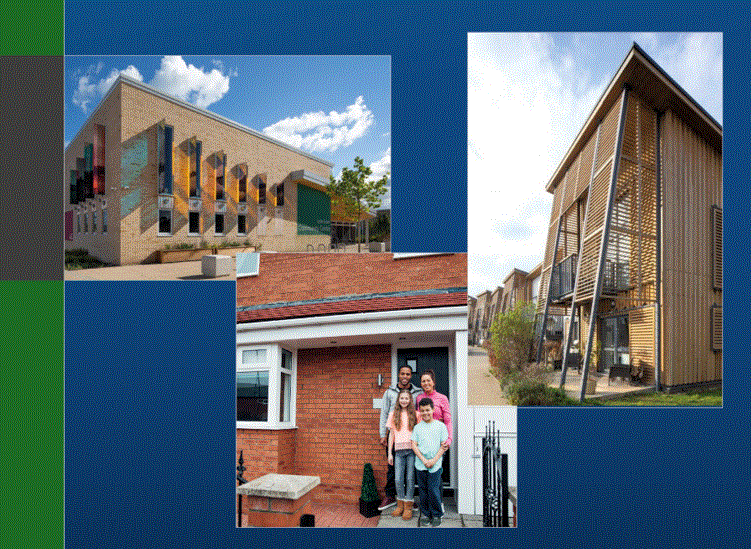
Glossary of terms included in this strategy.
Our vision
We want everyone in South Gloucestershire to live in a healthy, affordable, low energy and low carbon, climate resilient home that meets their needs within a safe and thriving local community, which is accessible to all.
Why we have a housing strategy
The strategy will:
- inform our partners and residents about the housing challenges and priorities in the area
- describe our ambitions for the vision and high-level objectives
- focus resources and effort on agreed priorities
- highlight the importance of reducing inequalities
- maintain a strategic overview of housing development
- give strategic context for some of our housing related statutory duties
The strategy will help us work with partner organisations and registered providers, as well as landowners and developers.
It will also support bids for additional funding through funding bodies such as:
It is a high-level, strategic document setting out the council’s ideals and aspirations for housing in South Gloucestershire over the longer term, which will be subject to changing constraints and funding.
Housing plays an important role in helping to:
- reduce inequalities
- give children the best start in life
- improve health and wellbeing
- support people to reach their full potential
The council’s housing activities depend on the financial and other resources available, legislation and regulations, government policies and the ability of external organisations like developers and housing associations to provide the required housing. These constraints limit the ability to make detailed plans to implement the vision.
There are many other council strategies and plans which are linked to housing and which contain the detailed activities and outcomes necessary to deliver high quality housing and neighbourhoods where people want to live. The housing strategy brings together the housing related parts of other plans and strategies, including the objectives of the:
- Council Plan
- Climate and Nature Emergency Strategy
- Sustainable Communities Strategy
- South Gloucestershire Local Plan
The housing strategy is not a planning policy tool. To ensure that the right kind of housing is built in the right place, the Local Plan contains the policies used to determine planning applications and sets out locations for future development.
In addition to the overarching strategies and plans above, the housing strategy contains links to signpost policies and strategies on other areas of council activity such as health, homelessness, lettings and affordable housing.
The diagram below shows how housing links to other policies and strategies and whether they are higher level or subordinate to the housing strategy. The diagram also shows examples of the evidence required to support housing and other policies.
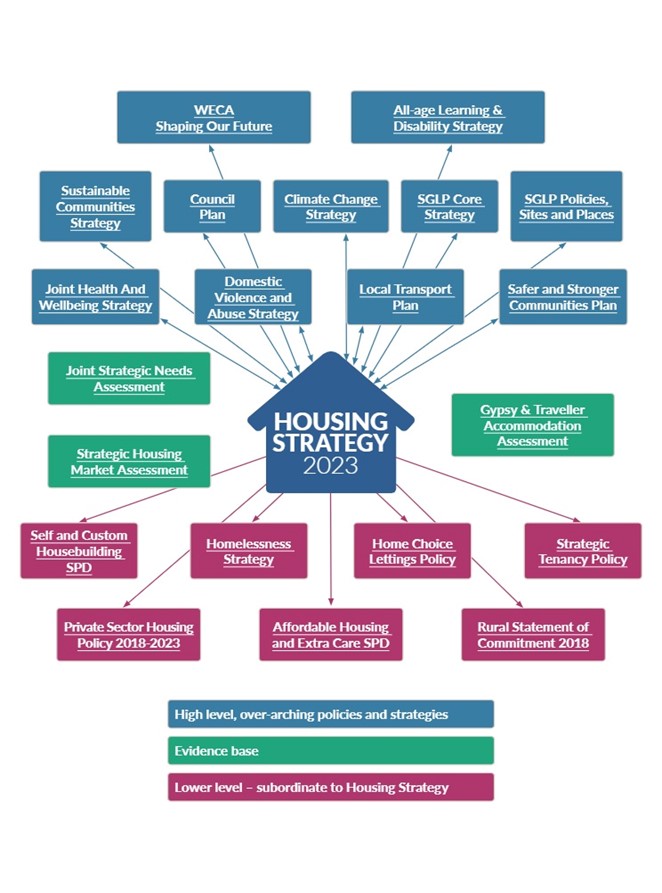
Download the diagram (pdf).
The strategy is reviewed regularly to make sure it continues to respond to the housing needs across South Gloucestershire, and to reflect changes in national policy, legislation and strategy.
The wider context
All housing initiatives and related activities carried out by the council must make a positive impact on:
Climate and nature emergency
We declared a climate and nature emergency in 2019 and pledged to provide leadership to enable South Gloucestershire to become carbon neutral by 2030.
We have a climate emergency action plan for every year until 2030.
To deliver these pledges our aims are to:
- become carbon neutral by 2030
- maximise the generation of renewable energy from installations located within South Gloucestershire
- make sure South Gloucestershire is prepared for the local impacts of a changing climate
- ensure that nature in our local area is more protected, connected and healthy and that biodiversity is increased
- plant trees across South Gloucestershire by 2030 to double tree canopy cover
Housing plays a crucial role in delivering all these aims. Our existing 115,000 homes emit 342,000 tCO2e per year, which is approximately a third of South Gloucestershire total emissions.
For further information you can read the Climate Emergency Strategy and Climate Emergency Action Plans.
Health and wellbeing
We know that housing can have a big impact on health and wellbeing.
People who live in houses which are poorly insulated, lack basic facilities, are in bad condition or overcrowded, experience more ill health than those who live in good housing.
People on lower incomes and from poorer backgrounds are more likely to be affected by the problems caused by substandard housing.
Most of the homes we currently have in South Gloucestershire will still be around in 2050. This is why we have made improving existing housing stock a priority.
To reduce health inequalities, all aspects of housing must make a positive contribution to the health of both individuals and communities.
The Covid-19 pandemic has highlighted the impact on a person’s health from their home, access to green spaces and that this disproportionately affects the elderly and people with disabilities, who spend more time at home.
The Health and Wellbeing Board, a statutory committee of South Gloucestershire Council, publishes the Joint Health and Wellbeing Strategy (JHWS), to guide the strategic direction across member organisations. A key theme of the JHWS is the built environment. Interventions to improve housing quality can be one of the most cost-effective ways available of improving health outcomes.
Equal opportunities
We have a statutory duty to consider the impact of our actions in relation to all groups in society.
We acknowledge the importance of treating people equally and we want to ensure that the housing strategy considers the impacts on all communities in carrying out its housing functions.
Housing is a basic need and is linked to all strands of opportunities in health, education, employment and community cohesion.
We will consider specific approaches to meet these needs as we review policies during the life of this Strategy. We have carried out an Equalities Impact Assessment Analysis (EqIAA) to understand the level of inequality that is experienced by protected groups in relation to housing, and can be found at Appendix 2.
If you cannot expand the sections above, try refreshing your browser (Ctrl F5 on a computer or swipe down from the top on a mobile or tablet)
.
If you cannot expand the sections above, try refreshing your browser (Ctrl F5 on a computer or swipe down from the top on a mobile or tablet)
Where we are now
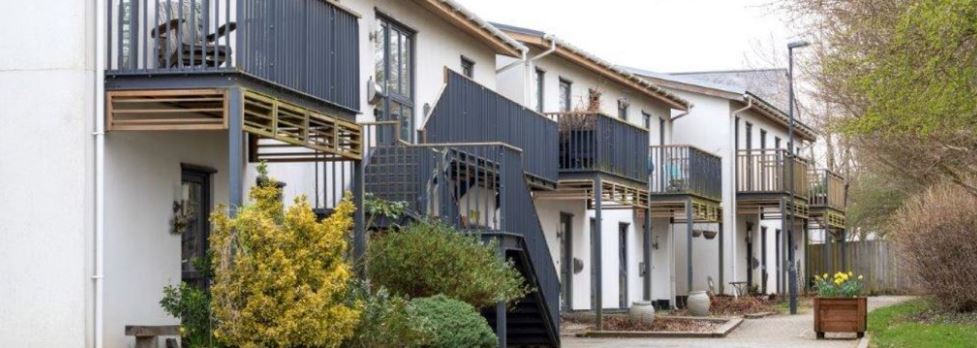
South Gloucestershire is predominately rural in area although most of the population live in the urban fringe of Bristol.
8,000
new homes have been built over the last five years in South Gloucestershire, and our population has grown by 10% over the past decade.
The number of residents is projected to rise by a further 17% by 2037. The biggest increases will be in the older age groups.
28,000
new homes are required by 2040 in South Gloucestershire to meet identified need, of which around 7,500 will be for affordable housing.
Most of South Gloucestershire’s affordable housing is delivered as a planning obligation by developers and purchased by registered provider members of the HomesWest panel to maintain and manage as rented accommodation for eligible households on the council’s HomeChoice housing register, or to lease as shared ownership for those who aspire to home ownership.
The main challenge is to provide enough affordable housing and housing which meets the needs of specific groups, such as older people and families.
Other facts and figures
Below are some other facts and figures from October 2022 when this strategy was written.

total population of 290.400 in 2021 which is projected to rise to 354,300 in 2043.

63% of the population live in the urban area, 17% in market towns and 20% in villages and rural areas.

In 2017 modelling identified that 75% of the housing stock is owner occupied, with 15% private rented and 10% social rented..

19% of the population are aged over 65, which is expected to increase to 21% by 2043.

In 2004, 21 South Gloucestershire areas rated in the most deprived 20% nationally against at least one domain of the Indices of Multiple Deprivation. By 2019 this had risen to 46.

Currently almost 2,000 households are registered as being in housing need.

61.2 crimes per 1,000 population, lower than both the South West and England and Wales averages (67.8 and 88.9 per 1,000) respectively.

In September 2021, the average price paid for a residential property in South Gloucestershire was £300,000 which is higher than the national (England) average £285,000 but lower than the regional (South West) average (£315,000).
In South Gloucestershire the average house price is 9.4 times the average pay (£31,714). This is above the national average (9.0) and below the West of England (9.9)
The average private sector rent is £950 monthly, ranging from £750 for a 1 bedroom flat to £1,750 for a 4 bedroom (or more) house
In 2021 the average earnings for a full-time worker living in South Gloucestershire was £31,714, higher than the national average (£31,490).

To year end March 2021 South Gloucestershire had an employment rate of 80.9%, higher than the sub-regional and national averages (78.6% and 74.9% respectively).
(Statistics from Census 2021)
Housing strategy aims
Delivering our housing strategy will provide the following benefits.
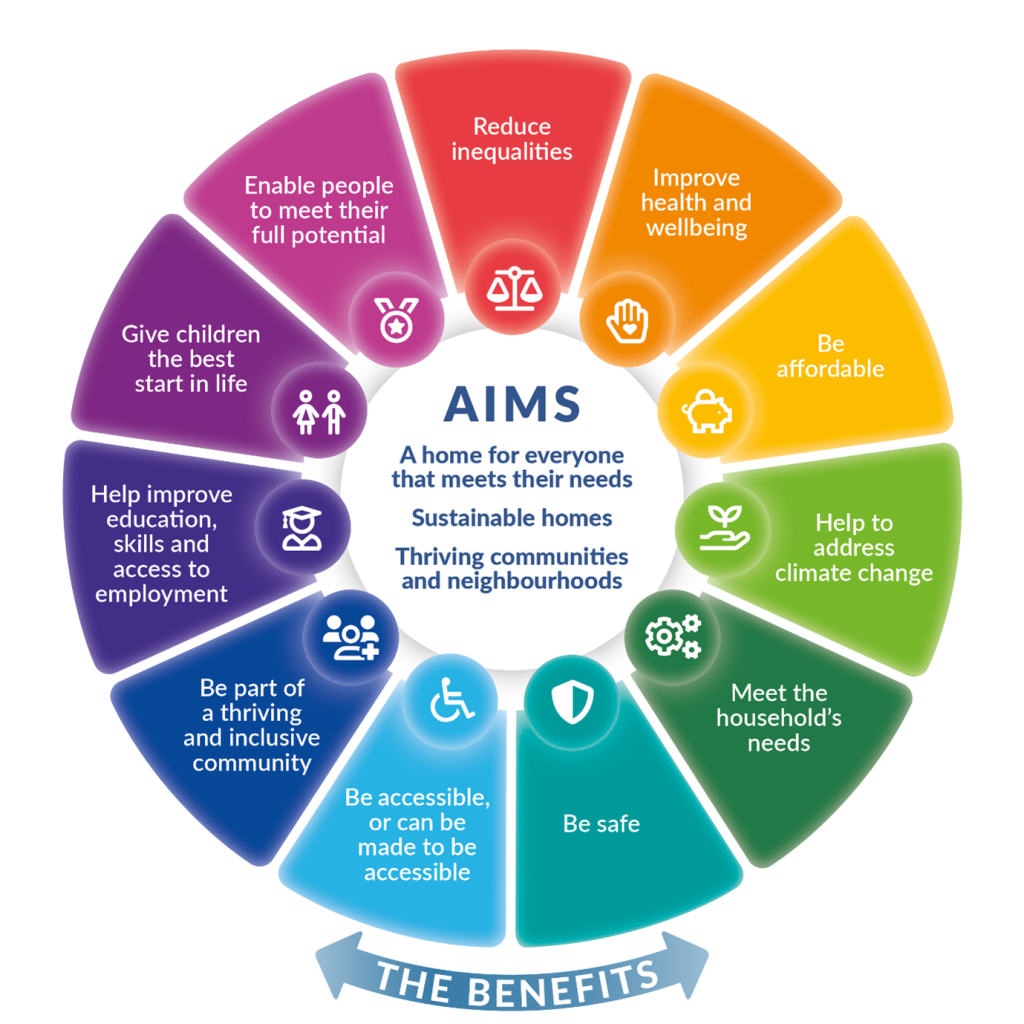
Download the infographic (pdf).
The 3 aims are:
- a home for everyone that meets their needs
- sustainable homes
- thriving communities and neighbourhoods
Aim 1: a home for everyone that meets their needs
so that everyone in South Gloucestershire can live in a suitable home.

This requires having the right:
- properties
- locations
- infrastructure
- services and support
for our residents to access and live in independently.
For the majority of households it is within their own means to choose where to purchase or rent their home, albeit to varying degrees.
The task for us is to make sure that homes are delivered, adapted and improved to ensure market supply.
There is a proportion of households who either do not have sufficient income or have a level of need, or both, and who are unable to make their own arrangements. This includes those who live in unsatisfactory conditions, have disabilities, medical or welfare needs.
We must ensure the provision of housing for everyone.
If you cannot expand the sections below, try refreshing your browser (Ctrl F5 on a computer or swipe down from the top on a mobile or tablet)
Objectives
1. Better understand the need for all housing
How we will do this
We commit to undertaking regular housing needs assessments and surveys to inform our understanding of what is needed in the area, including the specific needs of the following groups:
- housing for older and disabled people (built and adapted to meet needs)
- supported housing (with care) for those who need it, to include:
people with learning difficulties, mental ill-health, autism, people leaving care, looked after children, victims of domestic violence and abuse, homeless households - specific housing for identified groups of people such as essential local workers (key workers), refugees, current and former armed forces personnel and their families, gypsies and travellers, students and young single adults
- rural housing
- private rented housing
- community led housing
- provision of sites for those who wish to build their own homes or commission custom-build housing
- people in fuel poverty
Where the term affordable housing is used, this is a defined term as per the glossary.
2. Increase the supply of high-quality housing to meet identified need
How we will do this
We will:
- work in partnership with registered providers and other specialist housing providers to ensure a supply of:
- affordable housing, both rented and owner occupied (as nationally defined)
- extra care housing (sometimes known as assisted living)
- supported housing
- rural housing
- housing for older and people with disabilities (built and adapted to meet needs)
- deliver affordable housing through planning obligations without the use of public subsidy to the following standards:
- M4(2) (accessible housing)
- Secured by Design (Silver)
- a proportion of the affordable housing will be built to M4(3) standard (wheelchair adaptable housing)
- ensure we provide a variety of tenures, house types and sizes to suit a range of households and income levels
- robustly defend viability claims
- work in partnership with registered providers, partners and other housing providers on additional affordable housing opportunities
- provide specialist supported housing for people with complex learning difficulties
- maximise opportunities for housing delivery from council assets and future investment decisions through our asset management plan
- support bids for additional funding through funding bodies
- work with West of England Combined Authority (WECA) and other local authorities on cross-boundary housing issues
- work with local communities and partner organisations to bring forward community led housing and rural housing schemes to give choice and empower at a local level
- maintain the self-build register and work to develop a pipeline of plots for self-build and custom housebuilding, seeking a proportion from residential developments as a planning obligation
- support and take action to bring long term empty properties back into use
- support people through grants and loans to improve and adapt their homes to meet need now and in the future
3. Explore new approaches and interventions to generate an increase in housing delivery
How we will do this
We will:
- work with housebuilders, registered providers and other delivery partners on joint priorities and develop new ways to fund housing schemes
- tackle housing issues at a sub-regional level to pool resources and maximise benefits
- find innovative ways to deliver exemplar housing schemes
- develop a pipeline of housing sites for future funding streams
- consider how we can use social value and equality as a method to quantify the benefits of delivering different housing schemes
4. Ensure choice, support, and good management for affordable housing tenants
How we will do this
We will:
- select registered provider partners with good management and maintenance practice
- deliver enough affordable housing to provide choice for residents and to make it possible to move home
- commission good support providers where they are needed
5. Review the effectiveness of our re-housing policy
How we will do this
Our re-housing policy sets out how the council prioritises housing need through its banding system.
We will:
- regularly review how this policy is working to ensure that it reflects the highest needs and priorities, many of which are included in the EqIAA at Appendix 2 Equalities Impact Assessment
- respond to our findings and make recommendations for policy amendments
- work with our landlord partners to make sure that this policy is followed to fill vacant homes
6. Promote and deliver older people’s housing which provides choices and independence later in life
How we will do this
We will:
- work with partners and service users to bring forward the types of housing that meet older people’s aspirations, needs and budgets
- promote a wider range of tenures of housing so that people have choice and flexibility
- ensure partnership working is integrated with health and social care strategies
- offer assistive technology to enable people to stay in their homes with a great degree of control over their home environment
- support adaptations to properties to allow people to live and age safely in their own homes
- explore opportunities for intergenerational housing schemes or other new models which combine care and support within the setting
- ensure homes are built which can adapt to people’s changing needs by providing standards for minimum levels of space and a larger proportion of dwellings which are fully adaptable
7. Supported housing to improve outcomes for our priority need groups
How we will do this
We will:
- undertake research to determine the current and projected need for housing for different groups of people
- work with partners and service users to bring forward sites and housing schemes which deliver an improvement in people’s lives in terms of opportunity, choice, family support, skills/training and affordability
- integrate with health and social care strategies, for example the All-age Learning Disability Strategy
.
Aim 2: sustainable homes
‘Sustainability’ can be defined as ‘the ability to continue over a period of time’ and extended to include ensuring a balance between economic growth, care of the environment and social well-being. Sustainability also means meeting the needs of current generations without compromising the needs of future generations.
With regard to housing, therefore, a home or community must be suitable for current and future residents’ needs and be constructed without damaging the environment and so that it remains suitable for a changing climate without the need for future adaptation and retrofitting.
The council’s housing strategy adopts this principle in requiring all development and construction to be sustainable, meeting the needs of both current and future residents. Where the council cannot require the necessary standards, it will encourage their use and strive to develop policies which can require them.
We have pledged to become carbon neutral by 2030. Housing has a significant contribution to make to fulfilling this pledge.
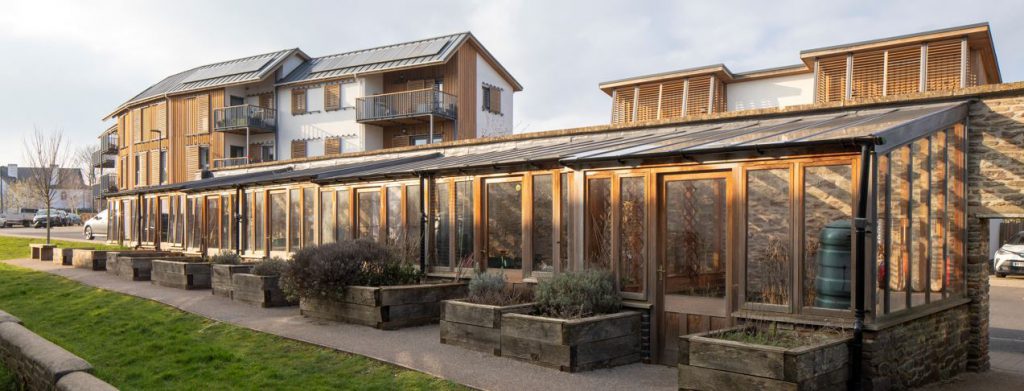
Most of the homes we currently have in South Gloucestershire will still be around in 2050. This is why we have made improving existing housing stock a priority.
This will also support homes to be warm and safe. It is key that all new housing stock is delivered at net zero and this has a dual aspect.
It is built using low carbon materials and techniques. It is designed to be net zero energy in its use, that means new homes generate sufficient renewable energy to meet their own needs over the whole year.
Good quality housing is essential for the health and wellbeing of residents, so it is vital that we work to ensure that existing homes are warm, safe, meet the needs of the occupants, are affordable to run, and are resilient to the impacts of climate change.
We must ensure that development is future proofed against the climate conditions which will be experienced within the lifetime of the homes being built. This includes preparing for up to 4°C rise in global temperatures and its knock-on effects.
A by-product of our affordable warmth work and through the provision of insulation and low-carbon heating has been to reduce CO2 emissions in those homes.
If you cannot expand the sections below, try refreshing your browser (Ctrl F5 on a computer or swipe down from the top on a mobile or tablet)
Objectives
1. Reduce fuel poverty by providing home improvements for low-income households
How we will do this
We will:
- tackle fuel poverty through our Warm and Well* scheme which offers energy advice and support, insulation and heating grants and loans. We will work in partnership with Lendology* to provide loans to enable people to improve insulation and upgrade heating systems (*details of the delivery of the above services are in the Private Sector Housing Policy 2018-23)
- ensure that homes are warm and dry contributing to the health of the occupants
- target and support/enforce the Minimum Energy Efficiency Standards (MEES) in the private rented sector
2. Support homeowners to retrofit their properties to enable carbon reduction and energy efficiency measures
How we will do this
We will:
- work with our HomesWest registered provider partners to upgrade poorly performing properties in the affordable housing sector
- support WECA to establish a domestic retrofit accelerator program and advice hub
- work with partners, including Bristol City Council, Vattenfall and the NHS to investigate and implement strategic heat networks
- lobby government at a local and regional level to influence future policy, strategy, and funding
- promote and provide information as well signposting to installers to enable homeowners to retrofit their homes, for example the Link to Energy directory
- seek funding where possible to enable more retrofit in the area
- update the Climate Emergency Action Plan annually to take forward and develop innovations to support domestic retrofit as part of our commitment to net zero carbon by 2030
- work in partnership with Lendology to provide loans to enable people to improve insulation and upgrade heating systems including renewable technology
3. Support people to maintain and adapt their homes to meet current and future needs (age well at home)
How we will do this
We will:
- ensure new homes are adaptable for a variety of potential users, family units and changing activities carried out in the home, using inclusive design principles
- ensure homes are built which can adapt to people’s changing needs by providing standards for minimum levels of space and a larger proportion of dwellings which are fully wheelchair accessible
- deliver Disabled Facilities Grants (DFGs) and Care Act funding to provide adaptations to enable people to remain safely in their home and maintenance services to homeowners such as the HandyVan service
- ensure all affordable housing will be built to M4(2) as a minimum standard, and we will lobby for this standard to be provided for all housing
- secure adapted and accessible properties on large developments to provide a proportion of wheelchair adaptable units M4(3)
- operate the Celestine Centre, an aids and adaptations demonstrator house which shows how disability, frailty and age is no barrier to independent living (The centre acts as an assessment centre for DFGs and allows people to see and try out equipment including assistive technology. It also provides daily living and life skills training for young people in transition from children to adult services)
4. Improve the quality of housing in the private rented sector including houses in multiple occupation (HMOs)
How we will do this
We will:
- undertake mandatory licensing of houses in multiple occupation (HMOs) to drive up the quality and safety of shared housing
- identify and take enforcement action against unlicensed HMOs
- work with private landlords and take enforcement action where necessary to tackle hazards and improve the quality of rented accommodation where many of our most vulnerable residents live
- use Article 4 Direction, to require planning permission for small HMOs (up to six rooms for rent) through our authority to manage growth in certain locations
- work in partnership with the other West of England authorities to promote the WoE Rental Standard and ensure consistency of approach and best practice where possible
- investigate the delivery of sufficient and appropriate accommodation for students and young single people in the right locations
- support landlords with low interest loans for repairs and improvements administered through Lendology
5. Increase the use of modern methods of construction (MMC) where appropriate
How we will do this
We will:
- lobby suppliers and government at a local and regional level to influence future policy, strategy and funding streams to enable the development of MMC products that comply with our policies
- encourage the use of appropriate MMC products on developments where it can actively accelerate the delivery of housing and diversify the market without affecting the delivery of the other objectives of this strategy
.
Aim 3: thriving communities and neighbourhoods
Aims 1 and 2 relate to our homes, what and where they are, and how we live in them.
This aim of communities and neighbourhoods is about our local area and what services we have access to.
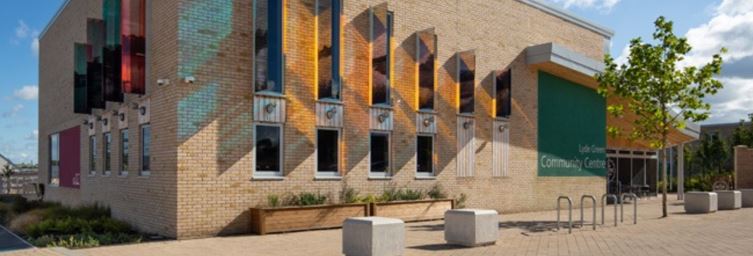
We want everyone to have a good experience of their surroundings, including built infrastructure, access to green spaces, good amenities, and facilities, and feeling safe.
If you cannot expand the sections below, try refreshing your browser (Ctrl F5 on a computer or swipe down from the top on a mobile or tablet)
Objectives
1. New neighbourhoods that people want to live in
How we will do this
We will:
- deliver housing in line with the Local Plan and masterplan (where it exists) for that neighbourhood
- deliver the homes for a mixed and balanced community with a ‘tenure-blind’ distribution of affordable housing
- provide a variety of house types and sizes to suit all households and income levels
- engage with developers to seek opportunities to implement our ambitions
- explore opportunities for potential acquisitions to assist with delivery of our regeneration and place-shaping ambitions, where the market will not be able to deliver them
The West of England Combined Authority (WECA) has adopted a Placemaking Charter, which contains guiding principles and a framework of objectives for developers, public authorities, and local communities
2. Ensure adequate infrastructure and access to amenities
How we will do this
We will:
- deliver neighbourhoods which reduce the need for car journeys and focus on other forms of sustainable transport with the ambition to create neighbourhoods where everyday requirements are within 15-minute walk (around 1 mile) or cycle (around 3 miles). Ensure access to employment opportunities, transport, and local amenities
- ensure the timely provision of essential infrastructure and digital connectivity
- make it easier for people of all ages and ability to be able to safely access their local centres or high streets by providing an infrastructure for walking and cycling, and increasing options to reduce the reliance on cars through trials of electric scooters and bikes etc
- ensure that new developments meet the obligations of Local Plan policies to make contributions towards education, affordable housing, community facilities, transport, open space amenities etc as well as promoting sustainable communities in planning and design
- ensure the provision of sufficient and accessible green infrastructure, walking and cycling, transport links, open spaces, and public spaces
- ensure the delivery of accessible health services
- provide opportunities for physical activity for all, including play equipment, formal and informal sport, allotments, and open spaces with good access so everyone can benefit for amenities
3. Deliver sustainable rural development
How we will do this
We will:
- work with parish councils and rural communities to find opportunities for affordable housing provision
- carry out local housing needs surveys where opportunities arise to progress rural exception sites and first homes exception sites
- promote community led housing and neighbourhood planning
- continue our commitment to supporting local groups to produce neighbourhood development plans
4. Enhance community cohesion and safety
How we will do this
We will:
- work with communities and community development agencies to promote community cohesion and safe neighbourhoods and improve wellbeing
- align community development with the Sustainable Community Strategy
- ensure provision of community space and buildings in perpetuity through Local Plan policies
- develop community facilities for all groups in consultation with communities and managed by those communities
- engage with developers early to ensure infrastructure, for example schools, sport and recreation facilities, green spaces and community meeting places, is in place before occupation of homes
- engage and work in partnership with communities and stakeholders to enhance community cohesion
- continue our commitment to promote high quality design through design panel reviews
5. Regeneration of existing neighbourhoods
How we will do this
We will:
- work with communities in regenerating neighbourhoods where the housing stock requires extensive refurbishment and retrofitting but is uneconomical to repair and needs replacing, contributing to the national levelling up agenda
- explore opportunities for potential acquisitions where it can assist with delivery of our regeneration and place-shaping ambitions where the market will not be able to deliver them
- support and influence development of masterplans for identified areas
- continue to work with registered providers and other housing providers to transform redundant and unused brownfield land for new housing, making use of the Brownfield Register
- maximise opportunities for housing in town centre regenerations, to a high density where appropriate
6. Reduce long term empty properties
How we will do this
We will:
- support owners to bring properties back into occupation with advice, funding in the form of loans and providing lists of interested purchasers
- use enforcement, primarily through the Community Protection Notices, to require owners to improve the physical appearance of the property and incurring costs to leave the property empty
- prioritise action based on the length of time properties have been empty, the condition of the property and its impact on the surrounding community
- ensure long term empty properties are subject to the empty homes premium
- work in partnership with Age UK as part of our joint working on the improving homes and wellbeing project, to support owners while targeting properties that have fallen into disrepair or are untidy
7. Creating nature rich neighbourhoods where people and nature thrives
How we will do this
We will:
- integrate objectives with the principles and objectives of the Green Infrastructure Strategy
- achieve biodiversity net gain on all sites and where offsetting is required seek to apply appropriate ‘habitat bank’ solutions within South Gloucestershire
- develop housing and communities which are rich in nature to create greener places where people and nature thrive
- optimise green infrastructure in our plans and designs in new build and housing retrofit to deliver benefits, including adaptation and resilience to the changing climate, improving biodiversity, health, social and amenity benefits
- ensure that nature in our local area is protected, connected and healthy and that biodiversity is increased
.
How the strategy will be delivered
We will need to work in partnership with government agencies, public organisations, the voluntary sector and private sector providers.
We will also work with neighbouring authorities on cross-boundary housing issues and priorities.
The strategy will be delivered through the aims and objectives of:
Affordable Housing and Extra Care Housing Supplementary Planning Document
Self-build and Custom Housebuilding – Supplementary Planning Document
HomeChoice Lettings Policy and Procedure (statutory duties)
Supported by evidence from the:
- Local Housing Needs Assessment
- Joint Strategic Needs Assessment
- private sector housing stock modelling
- area-wide Viability Assessment
Find out more on how the housing strategy aligns with other council strategies and policies in this diagram (pdf).
Monitoring how we are doing
We will monitor and assess our progress towards achieving the objectives in this strategy.
Key performance indicators are listed in Appendix 1 – How we will monitor progress.
Image credits:
Image of Lyde Green community building: Oxford Architects.
Images of Hanham Hall: Sovereign Housing Association Ltd.